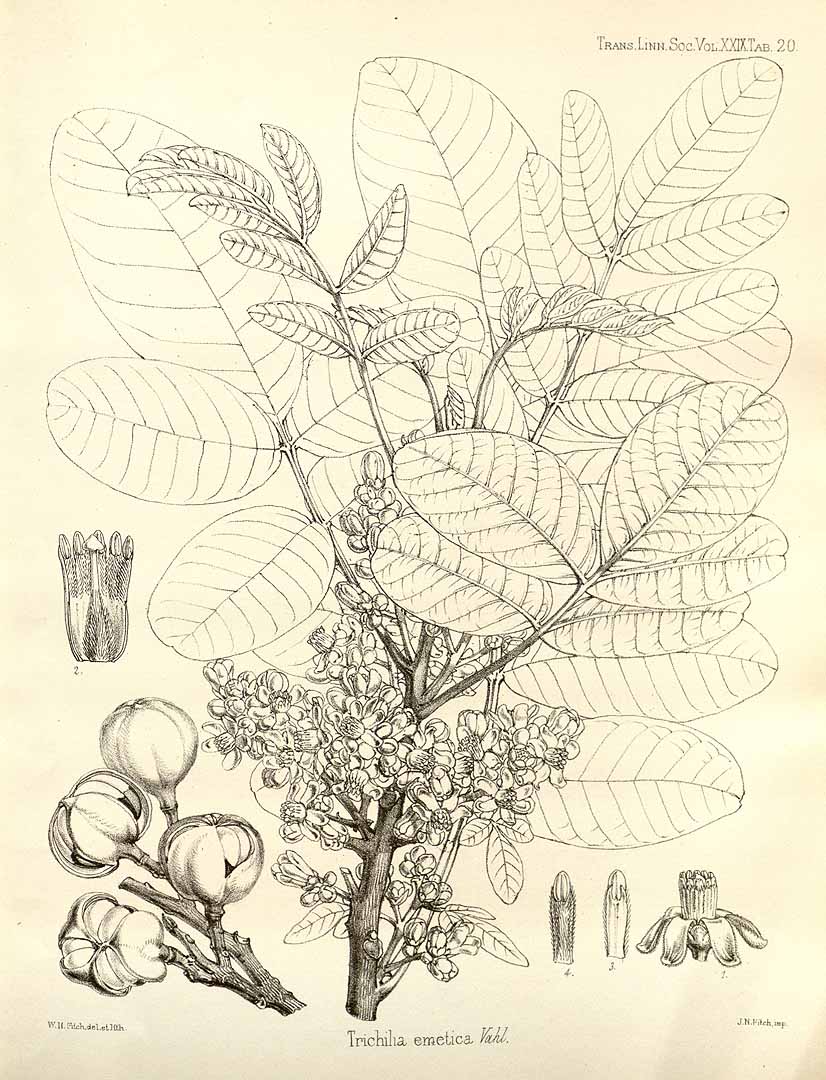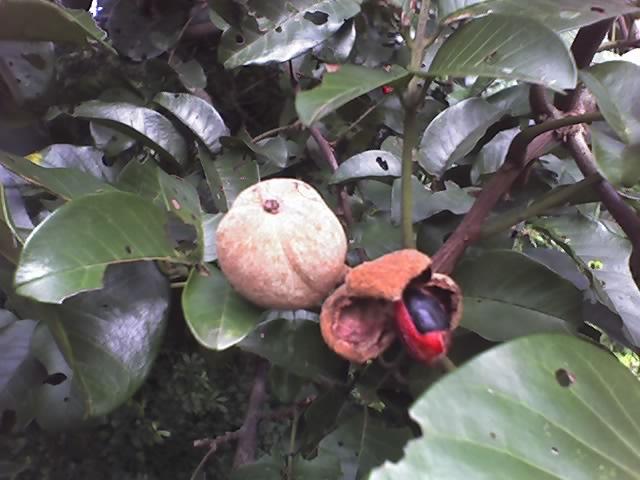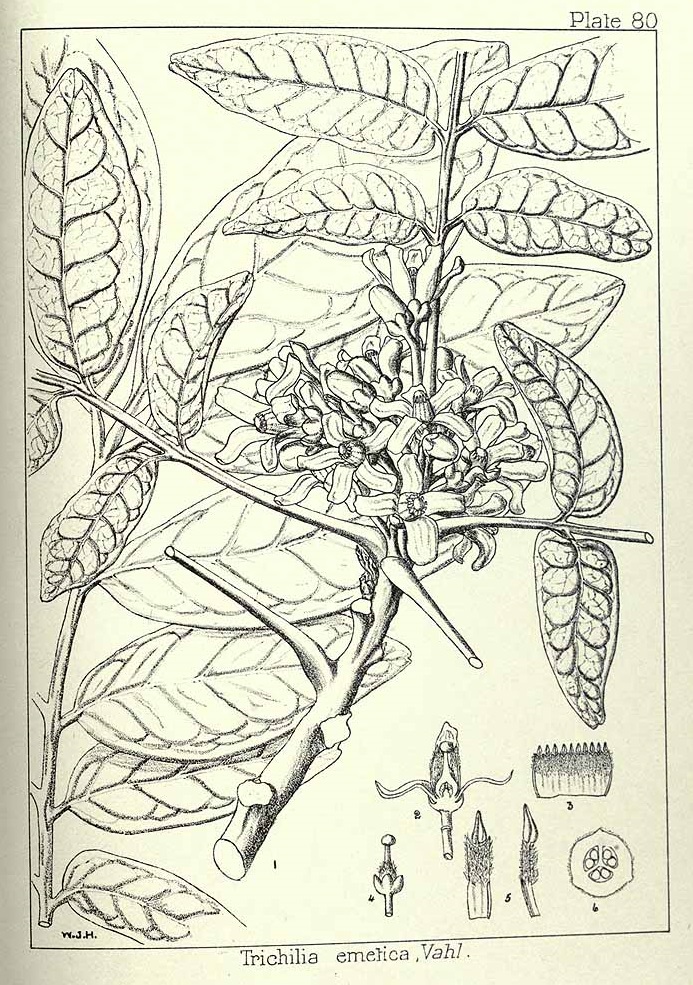! Nouveau site ici !
Vita > Plantae > Magnoliophyta > Magnoliopsida > Sapindales >
Meliaceae > Trichilia
Trichilia emetica

 | ** - ***
| ** - ***
Vita > Plantae > Magnoliophyta > Magnoliopsida > Sapindales >
Meliaceae > Trichilia
Trichilia emetica

Un grand arbre. C'est toujours vert. Il atteint 8-20 m de haut. La couronne est ronde et étendue. Les feuilles ont 4-5 paires de folioles et une à la fin. Ils sont oblongs et 12 cm de long sur 5,5 cm de large... (traduction automatique)
→suite
⬀
Le  donne accès au menu
donne accès au menu (c'est votre point de repère) 😊 ;
En dessous vous avez la classification, à partir de la vie (Vita, premier rang) jusqu'à la classe au dessus de la plante, dont vous trouvez ensuite le nom scientifique/botanique (latin) puis le nom commun (français), le cas échéant ;
C'est aussi un lien vers la fiche complète (tout comme la ✖, en bas à droite, et le +, en dessous de la description) ;
Vient alors l'illustration (ou ce qui la remplace, en attendant), la comestibilité :
Et en bas
⬂







